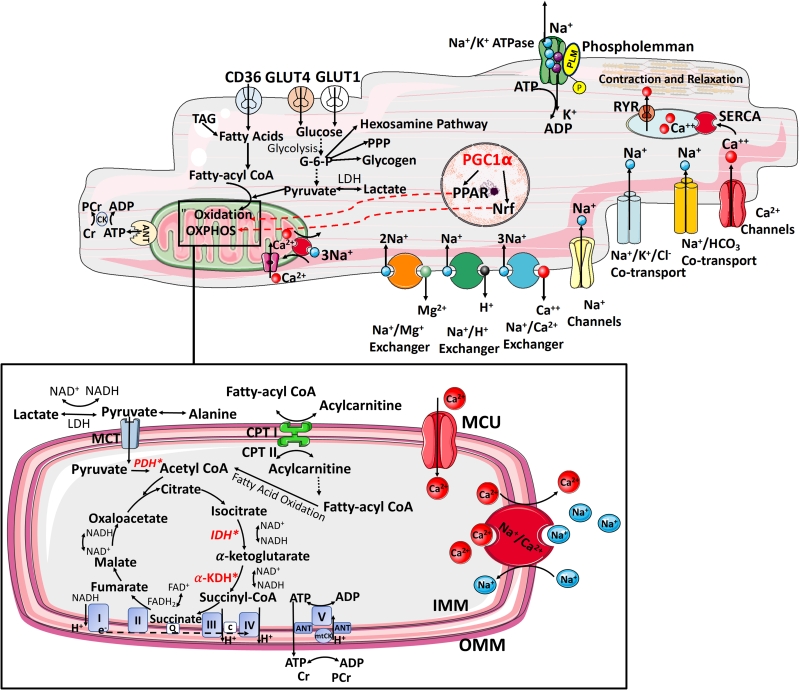Back to article: Immunometabolic cross-talk in the inflamed heart
FIGURE 1: Interplay between ATP supply and excitation-contraction coupling in the healthy heart. The delivery of metabolic substrates, their selection and uptake are followed by OXPHOS. It involves electron shuttling from cytosolic to mitochondrial reducing equivalents, transfer of energy by electrons from reducing equivalents to ETC complexes and generation of electrochemical proton (H+) gradient within the mitochondrial intermembrane space (respiratory complexes I, II, II, III, IV). The release of H+ gradient is coupled to the synthesis of ATP from ADP + Pi by F0,F1-ATPase (complex V), contributing >95% of ATP synthesis under aerobic conditions. The final stage of myocardial ATP supply (phosphotransfer) involves delivery of ATP from mitochondria to sites of use. This involves ADP–ATP exchange across the inner mitochondrial membrane by the adenine nucleotide transporter (ANT) and propagation of local ATP/ADP disequilibria primarily by the creatine kinase (CK) [25]. TAG, triacylglycerol; PCr, phosphocreatine; ANT, adenine nucleotide transporter; GLUT, glucose transporter; CD36, fatty acid transporter; PPP, pentose phosphate pathway; LDH, lactate dehydrogenase; PDH, pyruvate dehydrogenase; CPT, carnitine palmitoyltransferase; CACT, carnitine–acylcarnitine translocase; MCU, mitochondrial calcium uniporter; α-KDH, α-ketoglutarate dehydrogenase; IDH, isocitrate dehydrogenase; mitoCK, mitochondrial creatine kinase; IMM, inner mitochondrial membrane; OMM, outer mitochondrial membrane; Q, quinone pool; c, cytochrome c; MPC, mitochondrial pyruvate carrier; e−, electrons; *Mitochondrial calcium-sensitive dehydrogenases (pyruvate dehydrogenase, isocitrate dehydrogenase and α-ketoglutarate dehydrogenase) RYR0 ryanodine receptor, SERCA- sarcoendoplasmic reticulum Ca2+ ATPase.
25. Aksentijevic D, O'Brien BA, Eykyn TR, Shattock MJ (2018). Is there a causal link between intracellular Na elevation and metabolic remodelling in cardiac hypertrophy? Biochem Soc Trans 46(4): 817-827. doi: 10.1042/BST20170508

